Mirin vs. rice vinegar – there is a seemingly unending debate over the use of these two condiments, which are a mainstay of Japanese culinary culture.
Some think you can use them interchangeably.

But this is wrong! While they both come from rice, they’re different.
The subtle differences between mirin and rice vinegar can make it delicious or untenable.
Because of this, you must be careful with how you use either.
Table of Contents
What is Mirin?
Mirin is a fermented rice wine native to Japan.
It has a distinctive earthy flavor similar to mushrooms, as its fermentation uses kōji mold to saccharify the rice.
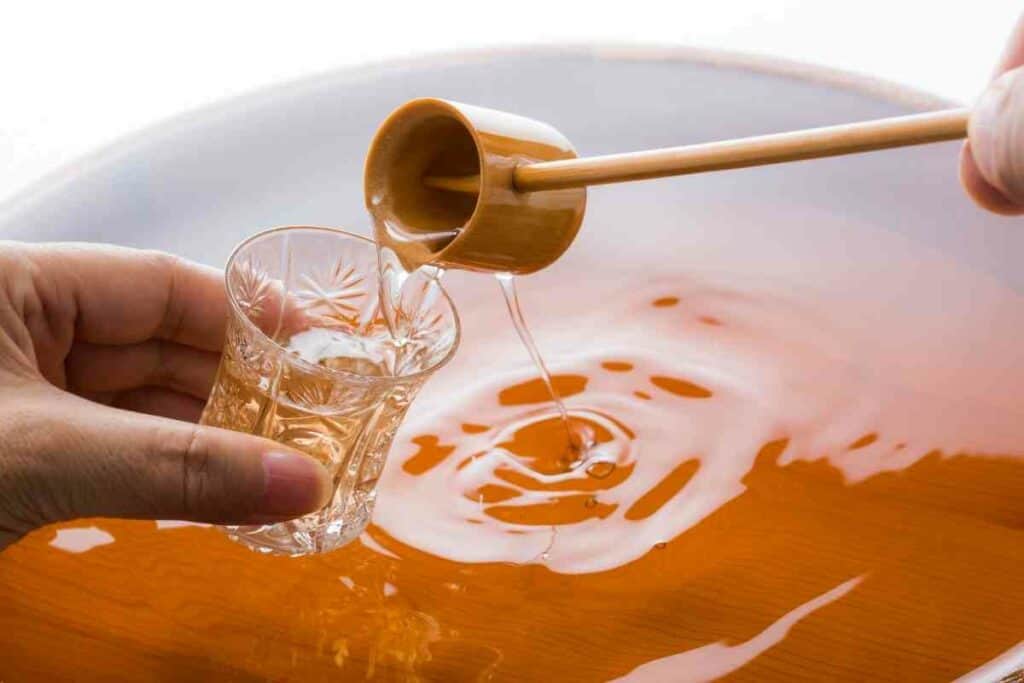
Unlike sake, mirin is sweet and has substantial quantities of residual sugar. It also has around 15% alcohol content.
Quick Tip – If you don’t like alcohol, you can reduce the content by cooking since alcohol evaporates faster than water.
Mirin gives teriyaki sauce, gyoza, and other dipping sauces their trademark umami flavor. The rich, sweet flavor is associated with the most popular Japanese dishes.
Mirin was discovered during the Edo period (1603-1867), where it was mostly used as a ready-to-drink wine due to its sweetness and low alcoholic content.
Only rich families could afford mirin. It was until the 18th century that ordinary people started using mirin.
[lasso type=”table” id=”63″ link_id=”7563″]
Types Of Mirin
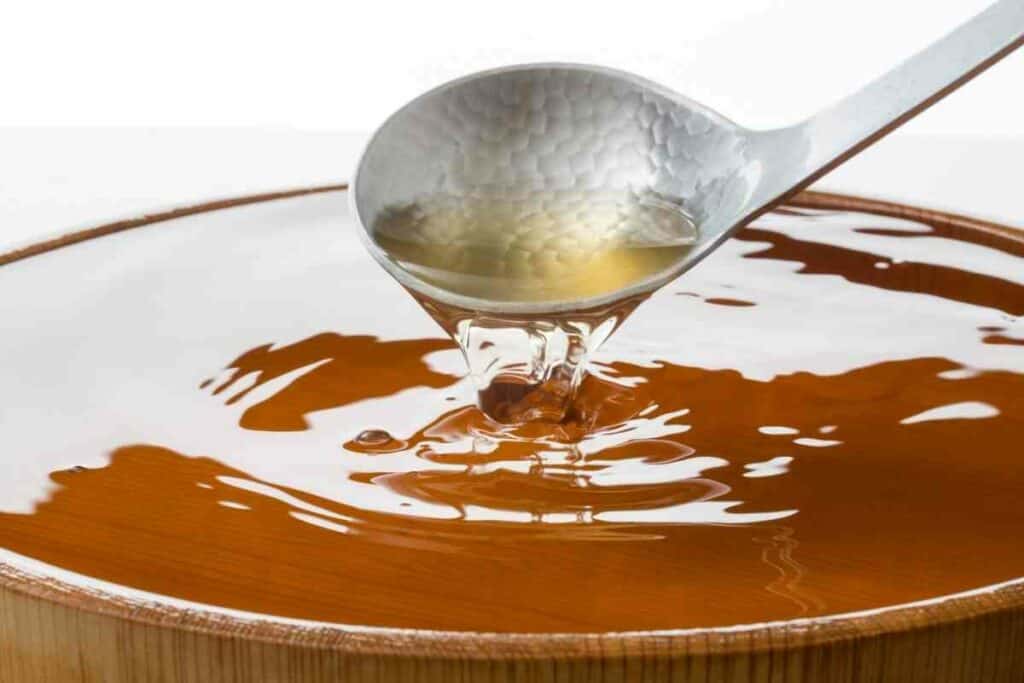
There are three mirin types:
- Hon
- Shio
- Shin
1. Hon Mirin
Japanese people recognize Hon Mirin as the most authentic mirin variant.
At 15%, it has the highest alcohol content, and its production ranges between 40 and 60 days after saccharification.
Hon Mirin is the costliest mirin due to its purity and the length of the production process.
2. Shio Mirin
Shio Mirin is also called salt mirin because it comprises 1.5% salt.
It takes a shorter time to produce than Hon Mirin, with the fermentation lasting 40 days maximum.
During the manufacturing of Shio mirin, brewers add salt to avoid alcohol taxes. Regardless, this variant is the most popular choice for cooking.
3. Shin Mirin
Shin Mirin is the newest mirin variant with the lowest alcohol content, standing at a paltry 1%.
Although it’s as sweet as Hon Mirin, it doesn’t match the latter’s potency. As a result, it is cheaper.
What Is Rice Vinegar?
Like mirin, Japanese rice vinegar comes from fermented rice.
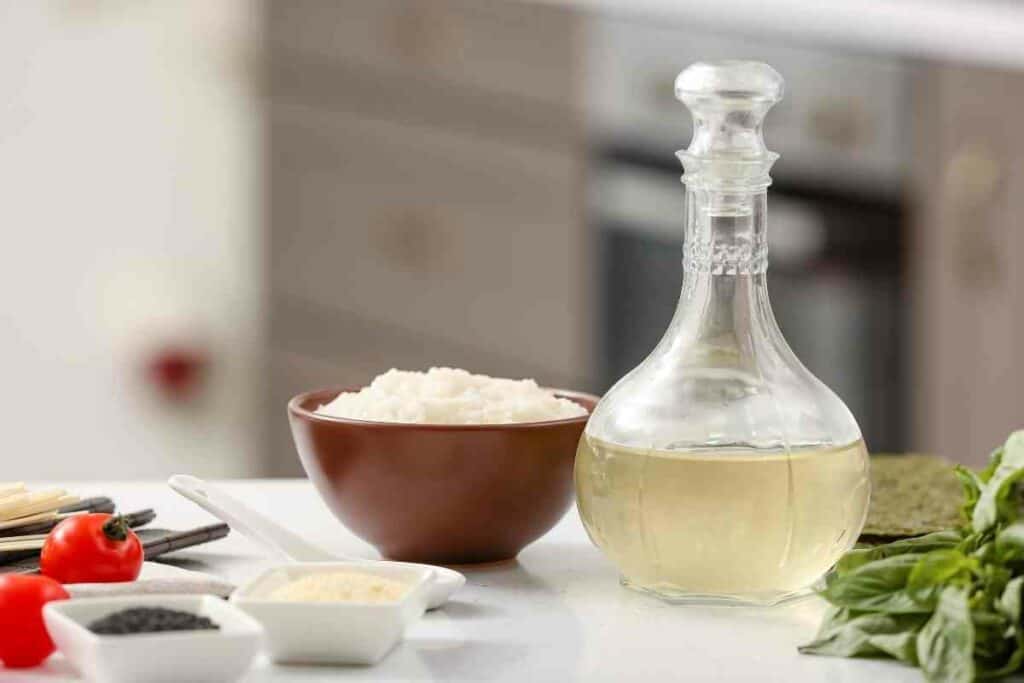
It’s milder and more mellow in taste than standard vinegar and malt drinks from western countries.
Rice vinegar is an integral component of many Japanese recipes.
You’ll find it in:
- salad dressings
- sauces
- pickles
- marinades
- simmered foods
Due to its acidic nature and considerable saltiness, you should use rice vinegar moderately.
Too much of it makes your dish too sour and salty.
Besides enhancing flavor, rice vinegar improves overall well-being by promoting digestive health, reducing the risk of heart disease, and fighting lactic acid to rejuvenate tired muscles.
Although the culinary uses of vinegar started many centuries ago, rice vinegar was introduced to Japan during the Edo period.
In 1804 – A factory worker suggested the idea of creating vinegar from sake leaves. After the idea’s implementation, rice vinegar was introduced, and its first use was seasoning sushi.
In the subsequent years, more people adopted the idea, resulting in the widespread use of rice vinegar in traditional Japanese recipes.
How Does it Compare with Other kinds of vinegar?
Rice vinegar is milder than other kinds of vinegar because it contains low acid content.
For instance, white wine vinegar tastes sourer than rice vinegar due to its high acid concentration.
Apple cider vinegar has a gentle flavor but is slightly more pronounced than rice vinegar.
The only exception is balsamic vinegar. Despite its high acidity, it’s sweeter than standard vinegar types.
For this reason, it’s the most practical substitute for rice vinegar.
Types of Rice Vinegar
Rice vinegar isn’t exclusive to Japan.
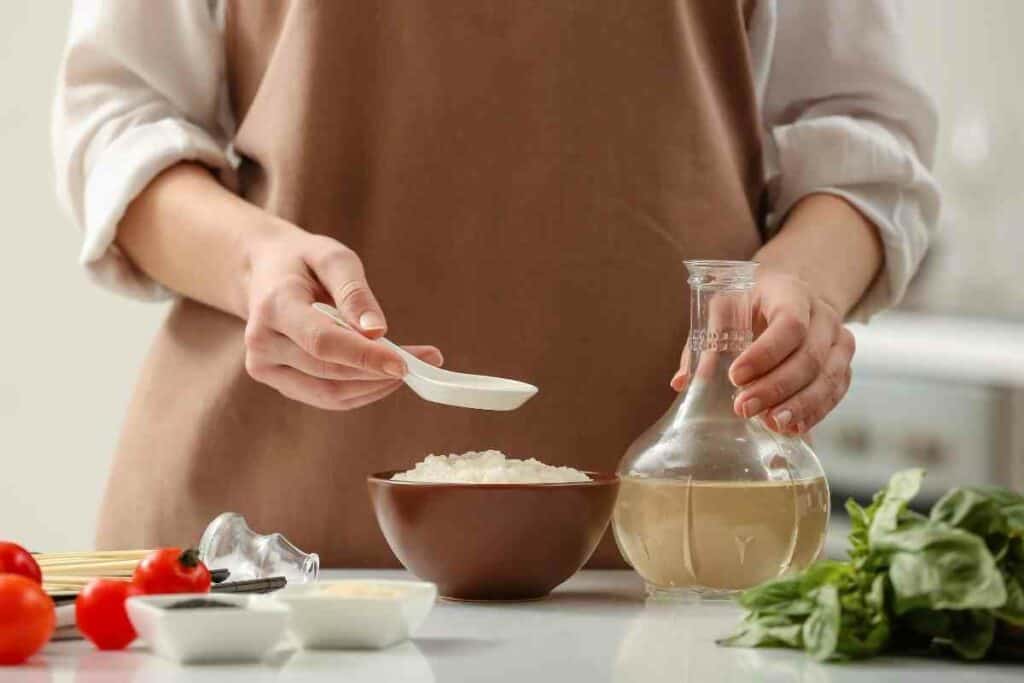
As seen in the types below, it’s available in other East Asian countries.
Here are the most popular rice vinegar types by country.
Japan
Japan has several rice vinegar types.
However, most variants fall under the two fooling broad categories:
- Japanese rice vinegar – is mild and mellow, with a white to pale yellow appearance. Its most common use is removing the unpleasant odor of raw fish and seafood.
- Seasoned rice vinegar – it’s made using sake, salt, and sugar. Its most common use is seasoning rice and other dishes.
China
China has three rice vinegar variants, namely:
- Black rice vinegar – it’s the sweetest, but it’s rarely used due to its smoky flavor.
- Red rice vinegar- has a distinctive red appearance and a similarly unique taste.
- White rice vinegar – has the highest acidic content, but the acidity doesn’t match standard western vinegar.
Korea
Korean rice vinegar is known as ssal-sikcho.
It’s made using white or brown rice mixed with a fermentation catalyst called nuruk.
Vietnam
Vietnam’s most common rice vinegar is known as ‘giam gao.’
Its main ingredients come from round-grain sticky rice, one of the staples in Vietnamese cuisine.
The country also has several lesser-known rice kinds of vinegar based on regional culinary cultures.
The Main Differences between Mirin and Rice Vinegar
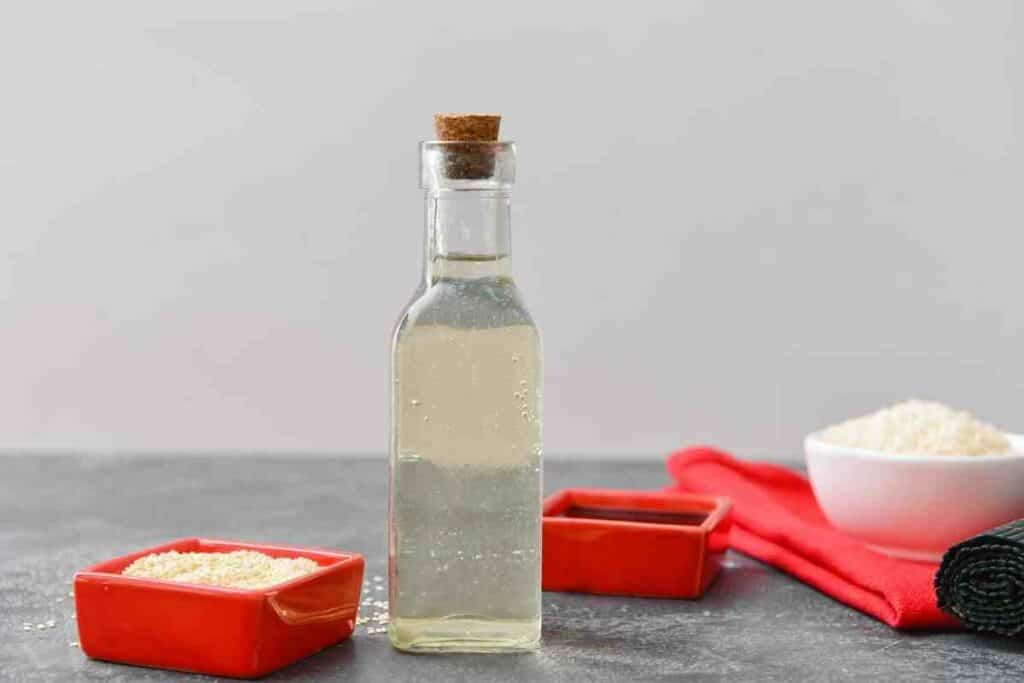
Here are the main differences between mirin and rice vinegar.
Uses
You can use mirin and rice vinegar as substitutes for balsamic vinegar.
However, rice vinegar is mostly used to add sourness to rice dishes due to its high acidity. On the other hand, mirin sweetens grains.
When combined with soy sauce, mirin makes teriyaki sauce, a popular addition to many Japanese dishes.
Conversely – Rice vinegar is more suited as a pickling agent. Ultimately, your desired taste determines what you should use.
Fermentation
Both mirin and rice vinegar are products of fermented rice.
Manufacturers use fungus to saccharify rice before it’s fermented into mirin, while rice vinegar uses bacteria.
Moreover, it takes a longer time to age rice vinegar than mirin. The extended aging period yields more acetic acid, explaining the bitterness.
Alcohol Content
Mirin has higher alcohol content than rice vinegar, meaning it’s more flavorful.
Mirin has 15% alcohol, while rice vinegar has 5%.
The high alcohol content also makes mirin less dense than rice vinegar.
Despite being an alcoholic drink, it isn’t easy to get drunk off mirin. To start feeling tipsy, drink at least ½ cup of mirin sauce.
Even then, the drowsiness will wane after a few minutes. However, overconsuming mirin has similar effects to drinking alcohol.
Flavor
As mentioned above, mirin has a more intense flavor than rice vinegar because of its high alcohol percentage.
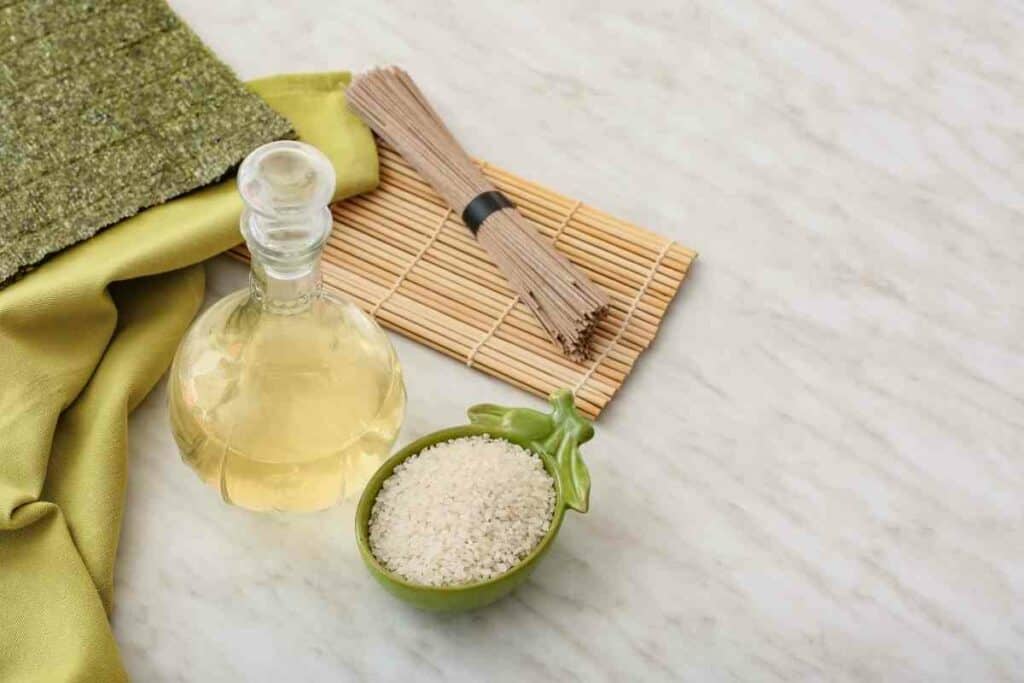
Regardless, it’s a popular choice for seasoning vegetables.
Some people add it to soy sauce to make the teriyaki sauce, famous for its bold and sophisticated flavor.
Rice vinegar tastes mild and mellow, making it a suitable addition to many dishes. Many chefs prefer it to mirin because it stabilizes recipes despite being less flavorful.
Unlike Mirin – Whose overconsumption hurts overall well-being, rice vinegar has health benefits. It has acetic acid, a powerful antioxidant that can reverse aging effects.
Acetic acid also fights free radicals inside your body, lowering the risk of cancers and heart disease.
Wrapping Up
While mirin and rice vinegar come from fermented rice, they have significant differences that result in varied tastes when used in cooking.
If you aren’t sure which suits your recipe, check online to avoid running your meal.
Happy cooking!
- Japanese Traditional Sweets (Wagashi): A Guide to Their Origins and Varieties
- A Taste of Japan in Every Bite – Japanese Candy & Snack Box Review
- Bubble Tea vs Boba Compared: What’s the Difference?
- Best Izakaya Foods for a Relaxed Night Out (My Top 10 Picks)
- Edo Kiriko Whiskey Glasses (Japanese Heritage in Every Pour)
- Japanese Viral Foods on Social Media (Discover the Top 10)









